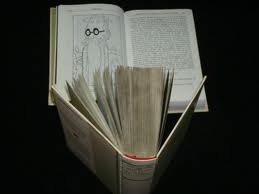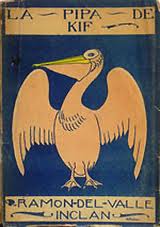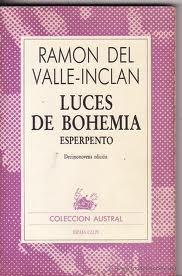Works of Ramon Maria del Valle-Inclan
Ramon de Valle-Inclan wrote during most of his life. His work is centered on theatre, but he also wrote several novels and published various books of poems. The Galician writer became famous for the particular aesthetic and topics of his works, and for the creation of the esperpento style.
Ramón de Valle-Inclan - Works

His narrative production begins with Modernism the collections of short stories "Femeninas" and "Epitalamio", which he started to write and publish during his first stay in Mexico. These stories were mainly published in Mexican newspapers and tended to be focused around sensorial and musical elements. However, his great monument to Modernism are the four sonatas of the Marquis of Bradomín, which secured his status as a writer. These sonatas displayed a certain nostalgic quality which is typical of writers who took after the father of Modernism, Rubén Darío (the man that brought the style from Latin America to Spain). "Flor de Santidad", one of the most important prose works of the Modernism movement in the Spanish language, mixes all the typical elements of Modernism, such as colorful and musical forms, with the folkloric tales of the northern Spanish region of Galicia.
"Tirano Banderas" is Ramon de Valle-Inclan's most remarkable novel, and it tells the story of the fall of the Latin American dictator Santos Banderas, a cruel and tyrannical character that stays in power thanks to his politics of fear and oppression. This novel is an exceptional account of the political situation in Latin America during the time the Galician author spent there. It is one of the first examples of what would later be called a "dictator novel". Together with his other novel, "Ruedo Ibérico", which talks about the Court of Isabella II in a very critical way, this novel marks a change in Ramon de Valle-Inclan's aesthetic and topics, and he moved closer to the worries and criticism of the authors in the Generation of '98.
His lyrical works are collected in the trilogy "Claves líricas" (1930): "Aromas de Leyenda", "El Pasajero" and "La pipa de Kif".

"Aromas de Leyenda" (1907) receives the Modernist influence as well and it's composed of 14 poems. In this work Ramon de Valle-Inclan centers around the topic of the Spanish region of Galicia: landscape descriptions, customs, folkloric tales, etc. "El Pasajero" (1920) revolves around more abstract and significant topics like death, pain, life, passion, eternity, etc. "La pipa de Kif", on the other hand, touches more grotesque themes. This work has been called a collection of tragic yet amusing illustrations.
Ramon de Valle-Inclan wrote plays from the beginning of his literary career, and he was always fascinated by theatre, although many of his plays didn't really catch on and were never represented. Like Unamuno, his theatrical works were clearly written in opposition to the Realist and Costumbrist styles of other authors. His theatrical works can be divided into 5 different periods:
- Modernist cycle: This cycle includes "The Marquis of Bradomín" (1906) and "El yermo de las almas" (1908).
- Mythical cycle: Based on his native Galicia, Ramon de Valle-Inclan creates a mythical and timeless world where irrationality, violence, lust, greed and death decide the destinies of the main characters. Some of the works which form a part of this cycle are "Divinas Palabras" and the trilogy "Comedias Bárbaras".
- Farce cycle: A series of comedies collected in a volume called "Tablado de marionetas para educación de príncipes" (1909, 1912 and 1920). These works present a contrast between the emotional and the grotesque, and the characters, which are puppets, announce the arrival of the esperpento.
- Esperpento cycle: "Luces de Bohemia" and "Martes de Carnaval" compose this cycle. The esperpento is much more than a new genre but a new way of perceiving the world as well. It deforms and distorts the normal view of reality to discover the real world behind it. For this, Ramon de Valle-Inclan uses the literary tool of parody; he humanizes objects and animals and turns humans into animals or objects.
- Final cycle: in his final theatrical works, the writer takes all his literary forms to extremes: marked presence of the irrational and intuitive, dehumanized characters, and the distortions of esperpento. All of these works were collected in "Retablo de la avaricia, la lujuria y la muerte".


